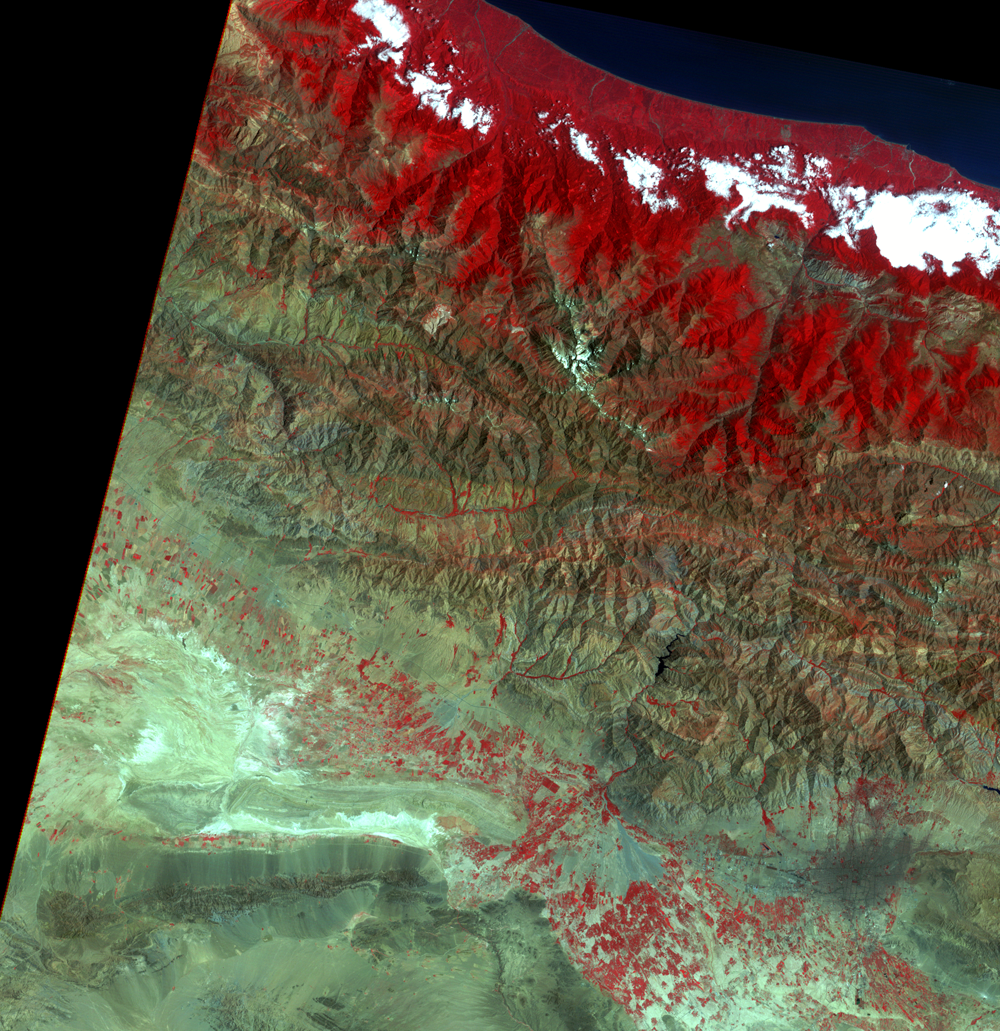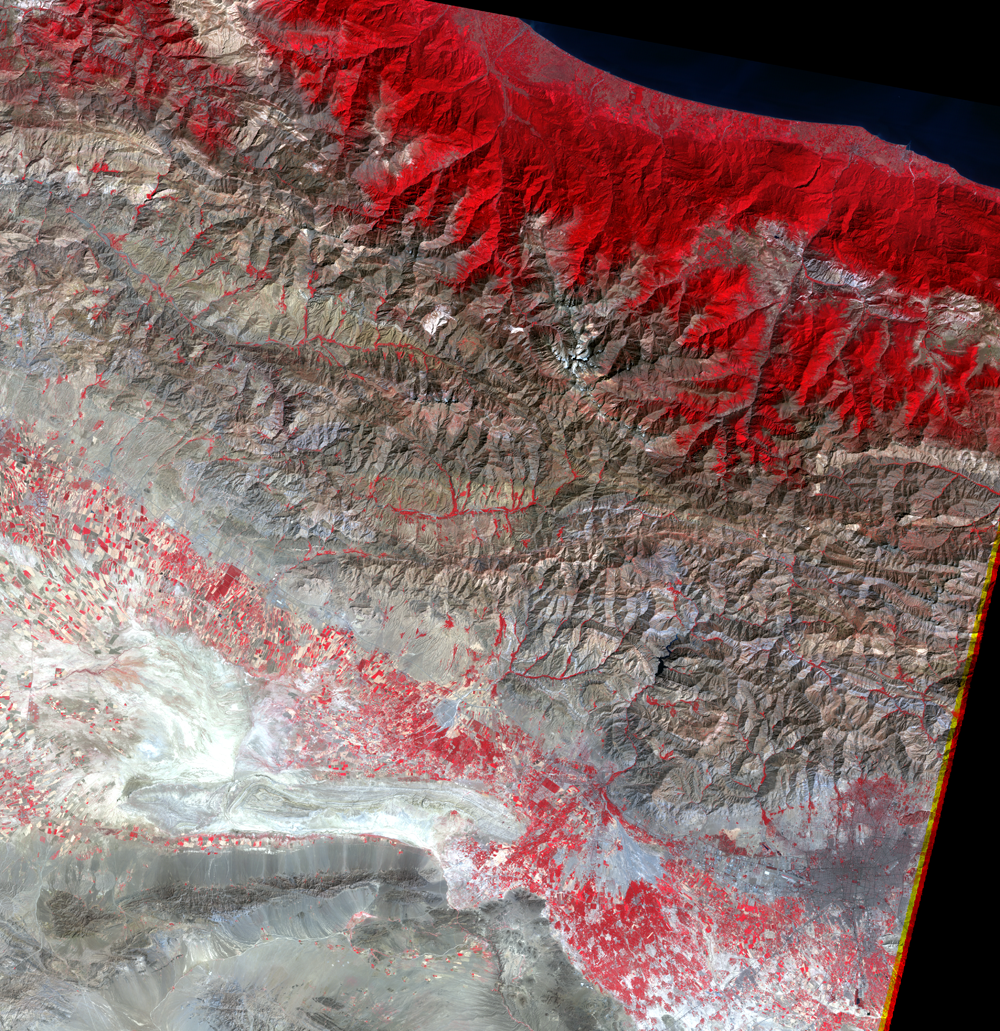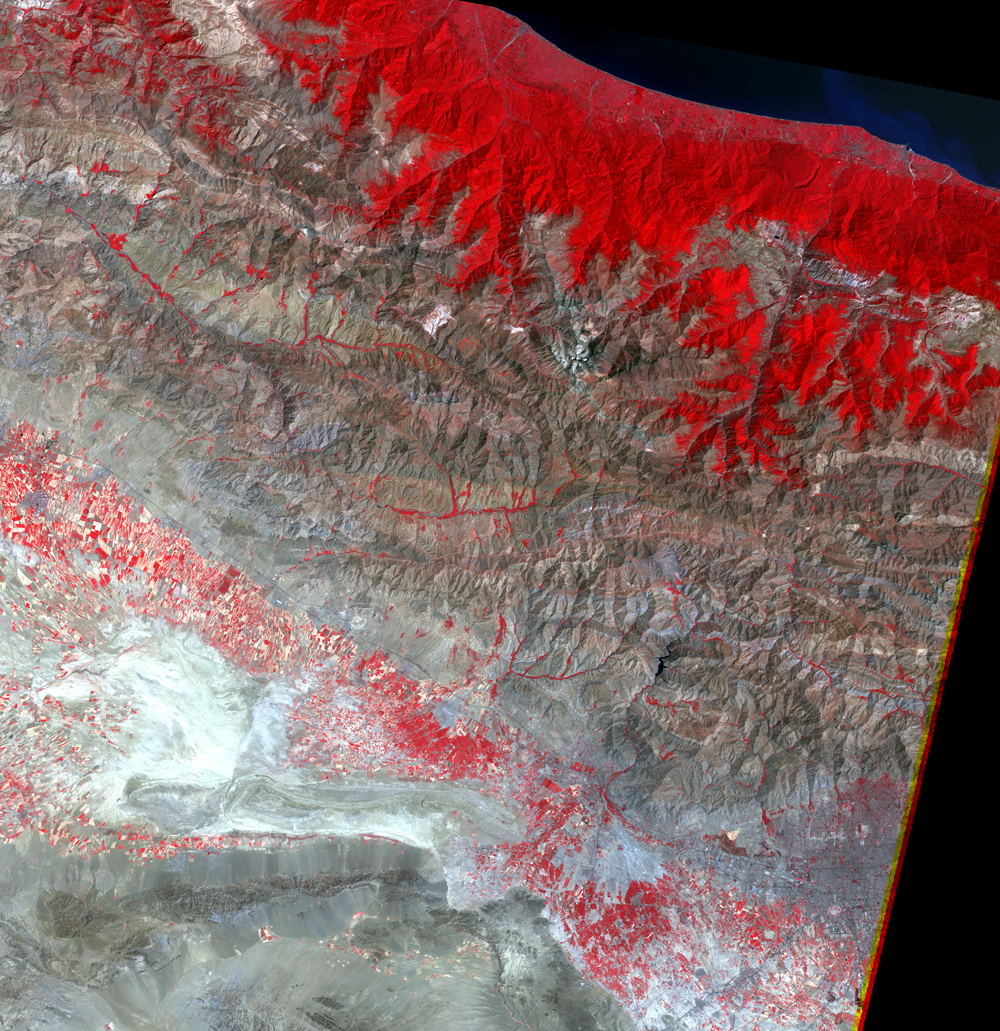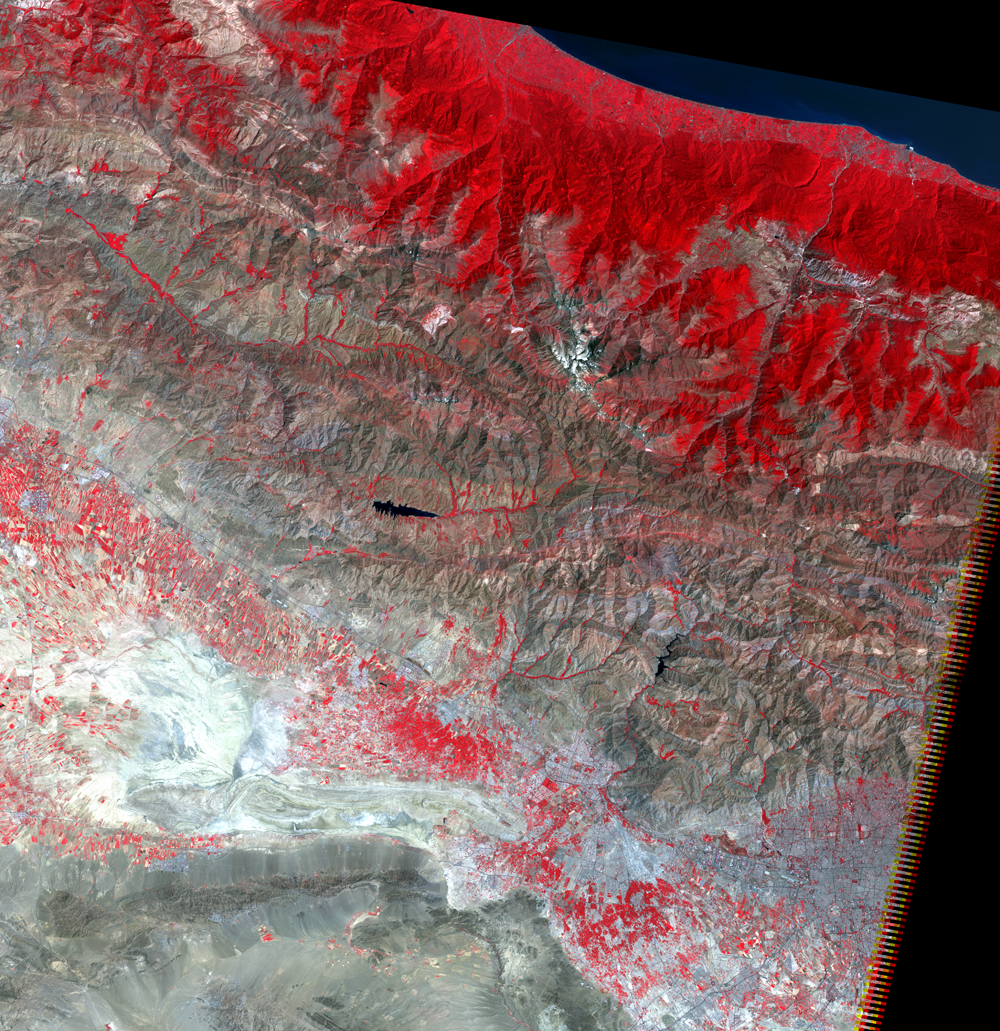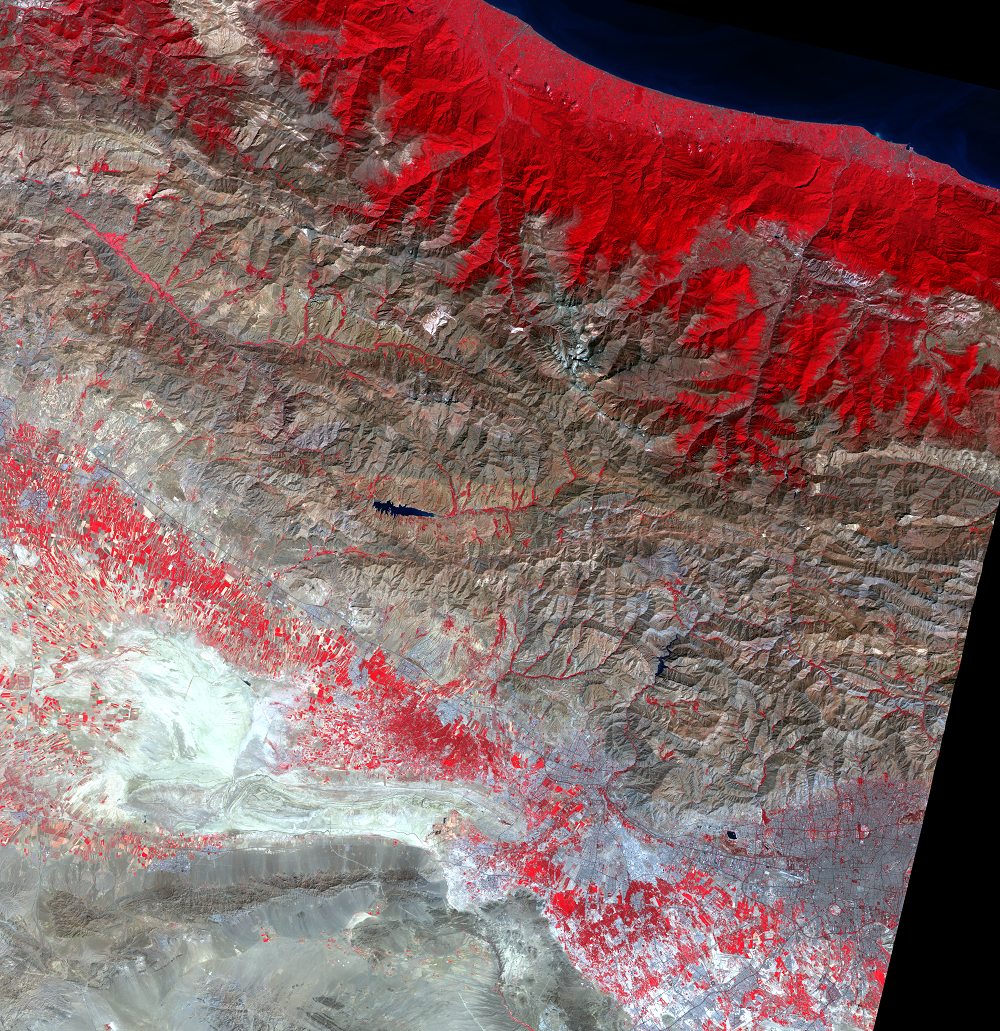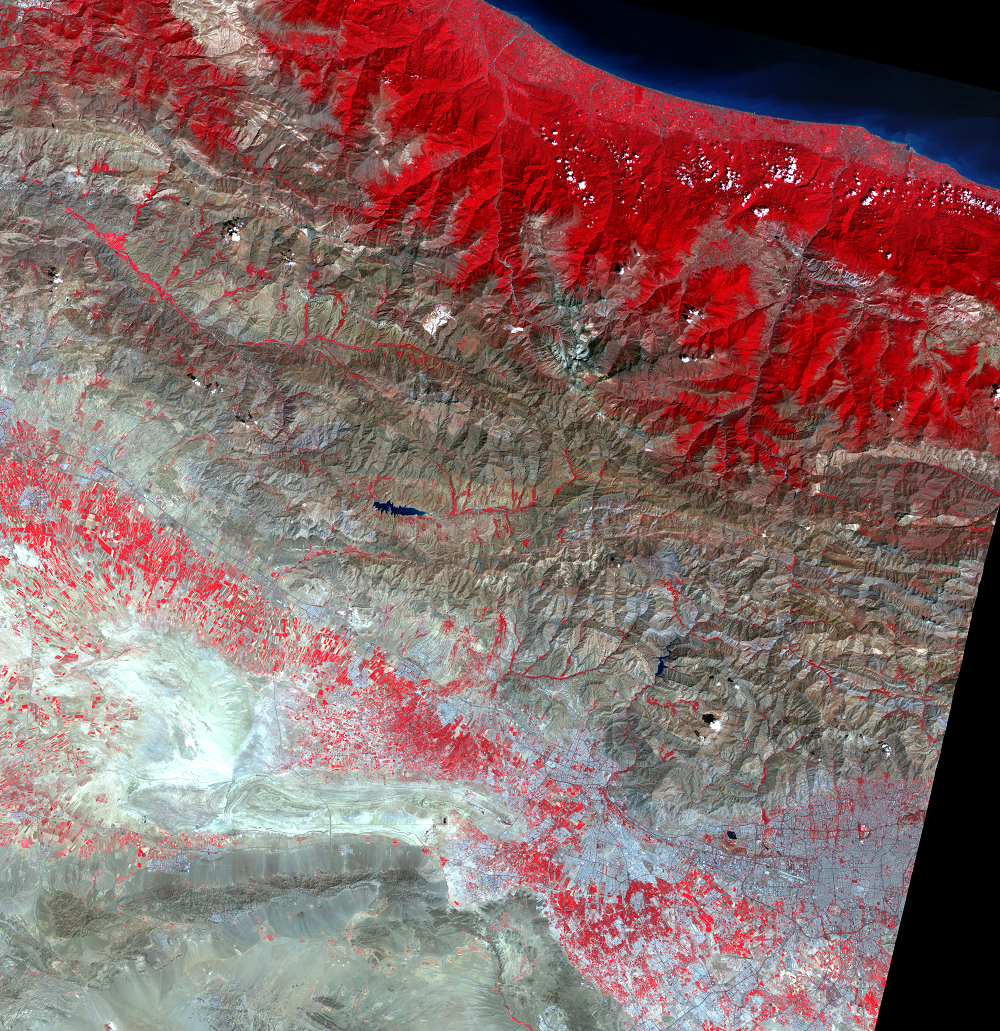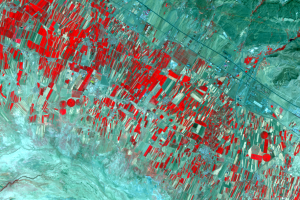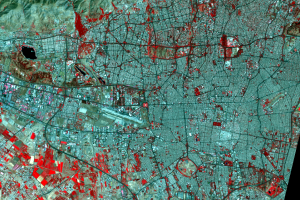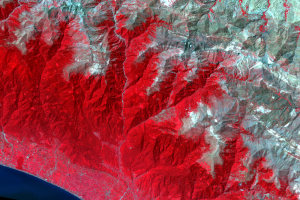
Elburz Mountains, Iran
Earth Resources Observation and Science (EROS) Center - Earthshots
These images show the vicinity of the Elburz Mountains in northern Iran. Tehran lies in the south, and the Caspian Sea is to the north.
The Elburz Mountains run parallel to the southern coast of the Caspian Sea, and these mountains act as a barrier to rain clouds moving southward; as the clouds rise in altitude to cross the mountains they drop their moisture. This abundant rainfall supports a heavy rainforest (the bright red area) on the northern slopes. The valley to the south receives little precipitation because of this rain-shadow effect of the mountains.
Imagery
Downloads
Demographia, 2021, Demographia World Urban Areas--Built-Up Urban Areas or World Agglomerations (17th ed.): 100 p., accessed July 6, 2021, at http://demographia.com/db-worldua.pdf.
Graves, William, and Blair, James, P., 1975, Iran—desert miracle: National Geographic Magazine, v. 147, no. 1, p. 246.
Helen Chapin Metz (ed.), 1989, Iran: a country study: Federal Research Division, Library of Congress, Washington, D.C., 342 p.
Scott, M., and Lindsey, R., 2009, Tehran Urbanization: NASA Earth Observatory, available online at http://earthobservatory.nasa.gov/IOTD/view.php?id=41308. (Accessed April 3, 2014.)
UNEP, 2005, Tehran—Impacts of Urban Expansion on Water Resources: UNEP, Division of Early Warning and Assessment, available online at https://na.unep.net/atlas/onePlanetManyPeople/downloads/urbanPosters/Teh.... (Accessed April 3, 2014.)

